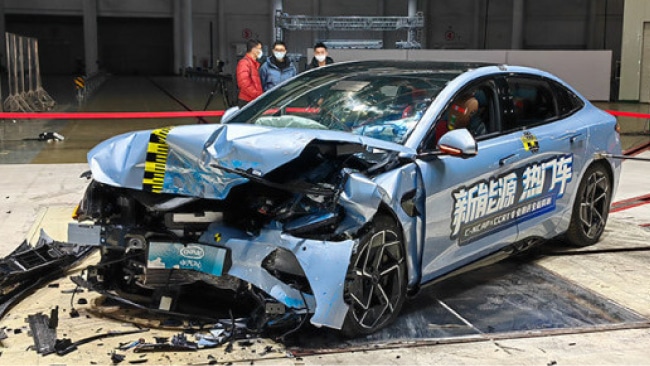The BYD Seal electric sedan has successfully passed the C-NCAP safety and crash test, scoring five stars. Its performance was even better than the NIO ET7. Anyway, its safety has also got some drawbacks. Let’s get to the Seal’s results.
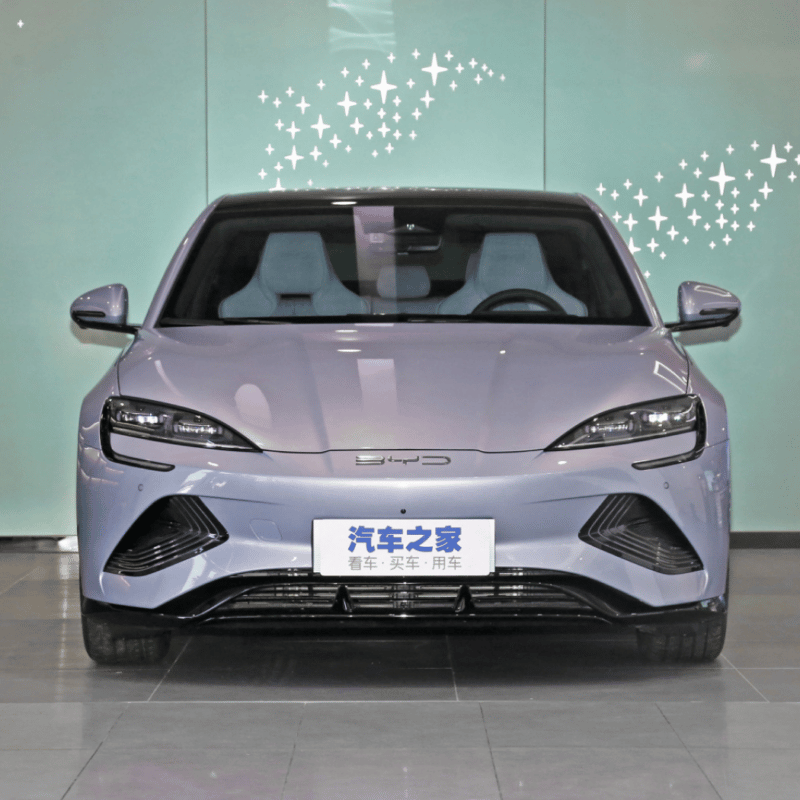


We will remind you that the BYD Seal is a sporty four-door Chinese electric sedan that stands on the e-platform 3.0. Its body has a smooth shape and drag coefficient of 0.219 Cd. The Seal’s exact dimensions are 4800/1875/1460 mm with a wheelbase of 2910 mm. It can be equipped with RWD and 4WD. The entry-level car got an electric motor for 150 kW (204 hp). The more expensive one got a motor for 230 kW (313 hp). And the top trim level has two electric motors and up to 390 kW (530 hp). As for the battery, there are two options: 61.4 kWh for 550 km (CLTC) and 82.5 kWh for 650-700 km of CLTC range (depending on the powertrain).
The C-NCAP has tested the BYD Seal with rear-wheel drive and an 82.5-kWh battery for 700 km of range. It is the third trim level of this vehicle. But why did C-NCAP pick it but not an entry level one? We aren’t sure about it because even the entry-level car has got a set of impressive autonomous driving tech. Maybe this version was the cheapest one that was available in the Chinese market at that time. Anyway, let’s get to the C-NCAP.
All You Should Know About C-NCAP

As you might know, the C-NCAP is a car safety and crash performance assessment program. It was formed in 2006 by the China Automotive Technology and Research Center (CATARC) and became a leader in the local car safety assessment sphere. But people often complained that the C-NCAP program is weak and doesn’t represent the real performance of cars. Anyway, CATARC did its best to improve the quality of C-NCAP tests, making it as closer to the Euro NCAP as possible. Nowadays, these two assessment programs have a lot in common. But the C-NCAP still doesn’t pay much attention to the Infant Occupants’ safety.
In the C-NCAP tests, the vehicle’s safety is evaluated on a scale from 0 to 100%. And then those percentages are converted into stars to make a result more understandable. The C-NCAP includes tests for vehicle occupants, vulnerable road users, and safety assistance functions. Now, let’s get to the Seal’s results.
BYD Seal C-NCAP Performance

First, we will mention that the BYD Seal has scored a total rating of five stars in the C-NCAP assessment program. Its exact performance is 88.6%, which is higher than the NIO ET7’s result of 87.3%.
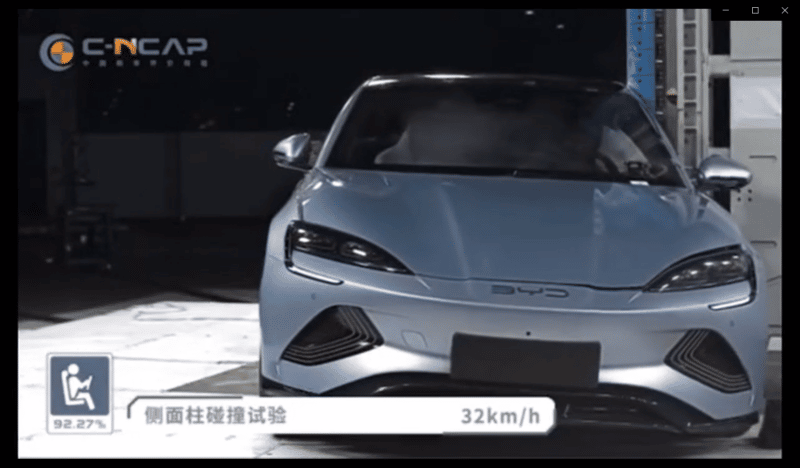
In the vehicle occupants’ segment, the Seal has scored 92.27%. All in all, it is a great result that shows how safety the Seal actually is. But we are here to highlight some of its drawbacks. And we will start with the side pole impact. Here, the BYD Seal’s result wasn’t perfect: it has scored 14 points 16. We can see in the video screenshot that the car hasn’t got serious damage, but the driver’s chest was damaged.
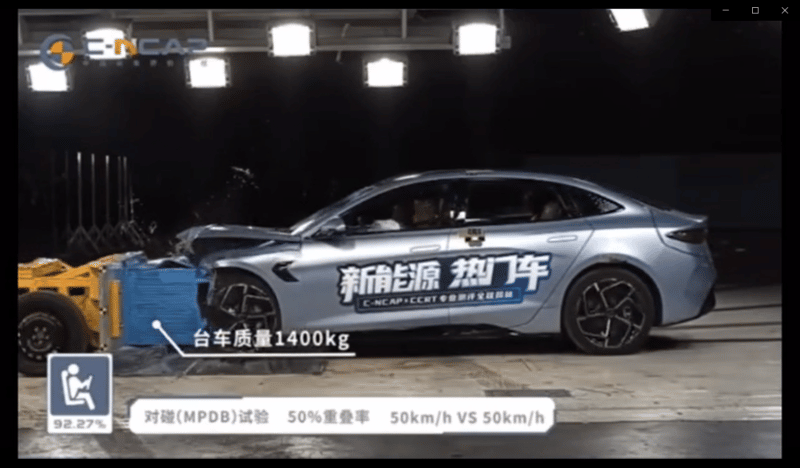

The Seal’s frontal full width collision was also good, but the driver and occupant’s chest and legs received light damage. As for the colliding with a mobile deformable barrier, the Seal has scored 21 points out of 24.
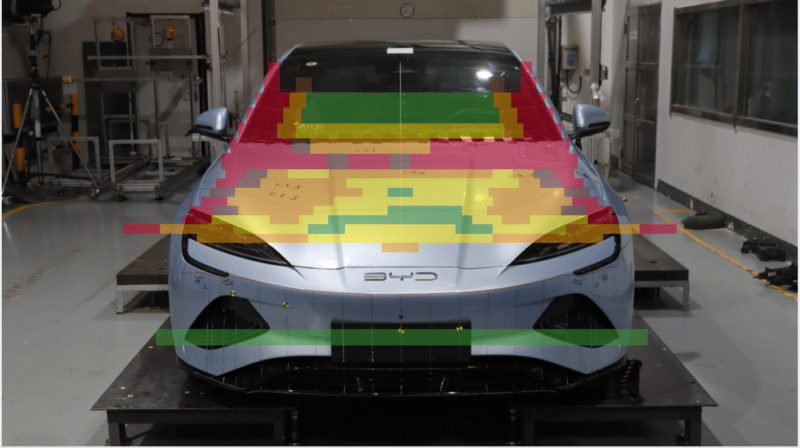
The vulnerable road users’ safety wasn’t as good as you might aspect from the Seal. It has scored 10 points out of 15. The leg impact wasn’t serious, but pedestrians can easily have a trauma by hitting not only A-pillars, but the bonnet edges and an area under the windshield. We should also underline that the Seal’s performance in the vulnerable road users’ safety is lower than the average level. In the safety assistance functions, the BYD Seal got 92.27 points. Its AEB system’s performance is 35.9 points out of 38.
In general, the BYD Seal’s performance is great. It seems like the CTB (Cell-to-Body) technology with a battery pack integrated into the frame really increases the safety of this EV. We will also remind you that the BYD Seal’s torsional rigidity is 40,000 Nm/degree. More on the BYD Seal as we get it.

Source: C-NCAP



